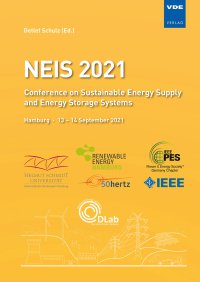Potentials and Technical Requirements for the Provision of Ancillary Services in Future Power Systems with Distributed Energy Resources
Conference: NEIS 2021 - Conference on Sustainable Energy Supply and Energy Storage Systems
09/13/2021 - 09/14/2021 at Hamburg, Deutschland
Proceedings: NEIS 2021
Pages: 8Language: englishTyp: PDF
Authors:
Lotz, Marc Rene; Wegkamp, Carsten; Hoffmann, Melanie; Kahl, Lily; Wussow, Jonas; Engel, Bernd; Kurrat, Michael (University of Technology Braunschweig, Braunschweig, Germany)
Majumdar, Neelotpal; Koenemund, Martin (Ostfalia University of Applied Sciences, Wolfenbttel, Germany)
Beutel, Vanessa; Schlachter, Henning; Agert, Carsten; Geissendoerfer, Stefan; von Maydell, Karsten (German Aerospace Center, Oldenburg, Germany)
Gerlach, Jana; Breitner, Michael H.; Hofmann, Lutz; Leveringhaus, Thomas (Leibniz University Hanover, Hanover, Germany)
Abstract:
A decentralized supply of electrical power based on renewable energies paves the way to a sustainable power supply without nuclear energy and without the emission of greenhouse gases. This energy transition (Energiewende) entails challenges regarding the provision of Ancillary Services (AS), associated with intermittent in-feed of Distributed Energy Resources (DER) into the distribution grids. In this paper, the demand, potentials, and technical requirements for AS provision in Germany, especially in the state of Lower Saxony, are discussed. These aspects are considered from multiple perspectives across all voltage levels. Beginning with a steady state analysis that focuses on the transmission grid, an expected increment in voltage violations and line congestions is revealed. Counteracting the resulting technical limit violations requires consideration of distribution grid flexibilities among others. To address this emerging demand, the potentials for the provision of AS by components in the distribution grids are identified. However, technical concepts are also required to exploit the potential, as DER in-feed has significant impact on the functionality of conventional protection systems. The analysis in this paper indicates the need for development of concepts to provide AS in the distribution grid and detailed technical requirements within a holistic simulative approach.


